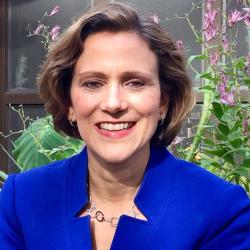During the COVID-19 pandemic, many low- to moderate-income households have struggled to pay their energy bills, as millions have lost critical income and many face higher utility bills because of increased time spent at home. Their homes, in particular, would benefit from energy-saving upgrades to reduce utility costs.
Yet such upgrades have historically attracted a relatively small share of financing. To address this inequity, ACEEE is holding an interactive session at this month’s Finance Forum: “Financing Efficiency in Low- to Moderate-Income and Affordable Multifamily Housing.” The panel will look at new capital sources and financing structures that target efficiency upgrades in this hard-to-reach market.
To give you a sneak peak, we reached out to the panel’s speakers with a few questions. Below are excerpts of our conversation with Kerry O’Neill, CEO of Inclusive Prosperity Capital, which invests in clean energy and resilience, and Candis Mary-Dauphin, program manager at StopWaste, a public agency in California’s Alameda County that helps people make smart decisions about the products they buy, the resources they use, and the items they no longer use.
Why have efficiency upgrades for affordable multifamily housing received little financing?
Kerry: Financing energy efficiency in affordable multifamily homes continues to be a challenge. This is in no small part due to the overall challenges of affordable multifamily housing: decades of disinvestment in the housing stock and a sector that is stretched beyond capacity in the best of times but even more so this past year with the pandemic and its devastating economic consequences. It is a complex sector with many different types of regulated and unregulated, subsidized and naturally occurring housing, as well as various disincentives and split incentives.
Candis: In general, energy efficiency (EE) programs, which often generate leads for EE financing programs, have been oriented primarily to the markets that are most cost effective, not hard-to-reach markets that are more expensive (and therefore not as cost effective) to serve. The result, as shown by studies, is that the populations that utilize and benefit from EE programs are generally higher income. Meanwhile, the low-income programs limit the number of participants. So there is a big gap between eligibility for the low-income programs and households with the financial means to take advantage of the EE programs.
How much has changed in recent years, and why is there more focus on social equity?
Candis: With the backdrop of events around racial inequality, systemic and institutional racism, as well as the unequal impacts of the COVID-19 pandemic and environmental catastrophes such as wildfires, as a coalition of local governments, we have sought to look for more opportunities to promote more-equitable outcomes across sectors and disciplines. Because of the multiple benefits of energy efficiency, we along with others are looking at ways that our work can target communities that struggle to thrive in the face of systemic oppression, with the goal of improving the health, resilience, and housing affordability for these residents.
What are the biggest remaining obstacles for financing efficiency in this underserved sector?
Kerry: One of my biggest pet peeves about our energy financing industry is that we are too focused on our needs and not focused enough on the needs of affordable multifamily housing owners and tenants. Unless it’s new construction, there are typically a lot of capital improvement needs that have to be addressed all at once (physical condition of building, roof, health and safety issues, etc.—not just energy systems/infrastructure). And we don’t typically create financing products that address all those needs or think about how we can easily work with other capital sources to do that. We just don’t make it easy for anyone, and we don’t often fund the technical assistance that is required to address the needs of this sector.
Candis: One of the biggest remaining obstacles is that we haven’t found a way to integrate EE financing into traditional financing. Property owners seeking out financing and considering building upgrades are usually not looking for EE financing; rather, they are looking for financing that can be used for all their planned upgrades. As long as EE financing is its own little niche, it will not scale. Affordable housing finance already involves the stacking of multiple financing sources in a project deal. Adding specialty EE lenders and products may be too complex.
How optimistic are you that financing such upgrades will happen quickly or robustly?
Candis: By working with appraisers and the secondary market stakeholders to recognize the value of energy efficiency upgrades, we can get the attention of mainstream banking institutions. At that point, I think we’ll see an acceleration of energy efficiency financing.
Kerry: I’m cautiously optimistic given the new Biden administration’s focus on climate, equity, and affordable housing. The financing sector is getting on board, but we need more products and programs on the ground that bring all the pieces together.




